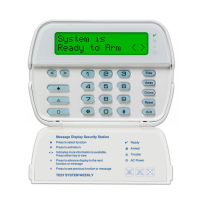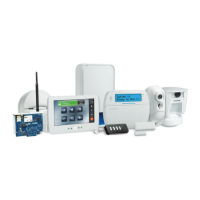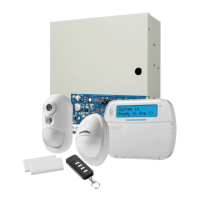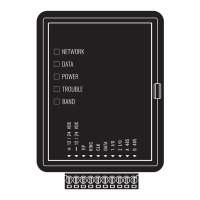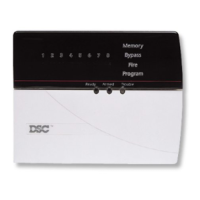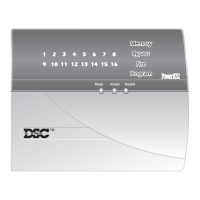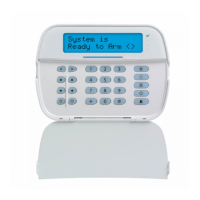PC1404
5.3 Programming Descriptions
3URJUDPPLQJ'HVFULSWLRQV
The following is a description of the programming features and options available in the control panel.
[000] Keypad Function Programming
Function Key Description
[00] Null The key is not used and will perform no function when pressed.
[01]-[02] Not Used
[03] Stay Arm Arms the partition to which the keypad is assigned. All stay/away and night type zones will be
automatically bypassed. Delay type zones will provide entry and exit delay. The quick arm
feature controls whether an access code must be entered after pressing this function key. The
exit delay will be silent if the panel is armed using this function key.
[04] Away Arm Arms the partition to which the keypad is assigned. All stay/away and night type zones will be
active at the end of the exit delay. Delay type zones will provide entry and exit delay. The
quick arm feature controls whether an access code must be entered after pressing this function
key. The exit delay will be audible if the panel is armed using this function key.
[05] [*][9] No Entry Arming After this function key is pressed, the user must enter a valid access code. The partition will
arm and remove entry delay from the partition when the exit delay expires. The key can be
pressed again to enable the entry delay. This function key always requires an access code entry
after it has been pressed.
[06] [*][4] Door Chime On/Off Pressing the key will toggle the door chime feature on or off. One solid beep means the feature
has been disabled, three short beeps means it has been enabled.
[07] Not Used
[08] Zone Bypassing When this function key is pressed, the system enters the [*][1] Zone Bypassing menu. If
desired, the panel can be configured to require an additional access code entry before the sys-
tem enters zone bypassing
[09] Trouble Display When this function key is pressed, the system enters the [*][2] Trouble Display menu.
[10] Not Used
[11] User Code Programming When this function key is pressed, the keypad prompts for an access code entry. If the master
code or an access code with similar permissions is entered, the system enters the [*][5] User
Code Programming menu.
[12] User Functions When this function key is pressed, the keypad prompts for an access code entry. If the master
code or an access code with similar permissions is entered, the system enters the [*][6] User
Functions menu.
[13] [*][7][1] Command Output This function key provides the user with a simple method of activating a PGM output pro-
grammed as Command Output 1. By default, an access code must be entered after the key is
pressed before the output will activate, but this can be changed by disabling PGM attribute 5.
[14] [*][7][2] Smoke Detector Reset Pressing this key will cause the panel to deactivate any output programmed as Sensor Reset.
[15] Not Used
[16] [*][0] Quick Exit Pressing this key will cause the panel to activate the Quick Exit feature.
[17] [*][1] Reactivate Stay/Away
Zones
This function key provides the user with a simple method of adding stay/away zones into the
system, and it changes the stay armed mode to away armed mode.
[18] Not Used
[19] [*][7][3] Command Output 3 This function key provides the user with a simple method of activating PGMs programmed as
Command Output #3. An access code may be required after pressing this key if PGM attribute
5 is enabled.
[20] Night Arming The system arms with all Night Zones bypassed, even if the delay zones are violated during
exit delay. This key only works while the system is disarmed, or armed in the stay mode. The
panel logs Armed in Night Mode for this closing type. If no night zone types are programmed
on the system, the panel will arm in away mode with an audible exit delay. Normally, no
acknowledgement beeps are sounded and the exit delay is silent if this function key is used to
arm.The quick arming toggle option controls whether an access code must be entered after the
function key is pressed.
[21] [*][7][4] Command Output 4 This function key provides the user with a simple method of activating a PGM output pro-
grammed as Command Output 4.
[22]-[24] Not Used
